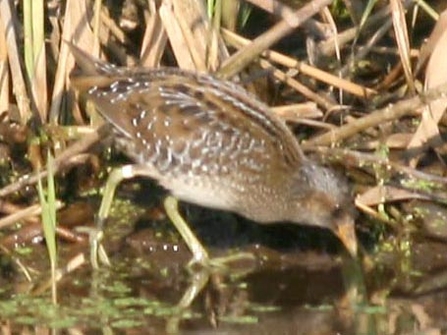The spotted crake, a starling-sized bird, is a very rare breeding bird in Britain and Ireland, with around 20-80 singing males/pairs recorded annually.
A single bird, thought to be juvenile readying for migration to Africa, has now been at Suffolk Wildlife Trust’s Lackford Lakes reserve for more than two weeks and has attracted birders from across East Anglia.
Mike Andrews, Visitor Officer for Lackford Lakes, near Bury St Edmunds, said he believed the recent hot weather could have created the perfect conditions for the unusual visitor.
“The dry conditions has meant that the water levels have dropped on some of our pools, creating the kind of muddy edges and fringes that spotted crake use to feed. It will be looking for all kinds of invertebrates, snails, plants and even small fish.”
Spotted crakes are notoriously hard to see, skulking in dense reed beds. But young birds can often be easier to see and appear less reluctant to leave their cover.
However, Mike says that anyone wanting to spot the spotted crake at Lackford should be prepared to get up early, as nearly all sightings have been between 6am and 8am.
Even if you don’t manage to catch a glimpse of the spotted crake in the coming days, there are plenty of other species to enjoy at Lackford Lakes. The visitor centre, serving coffee, cake and other refreshments is open from 10am to 5pm, seven days a week,
The spotted crake is the latest in a series of rare and unusual sightings at Suffolk Wildlife Trust reserves. Earlier this year, the presence of an American bittern at Carlton Marshes made national news and then in late June a yellow-spotted emerald dragonfly – the first recorded sighting in Britain – appeared at the same site.

